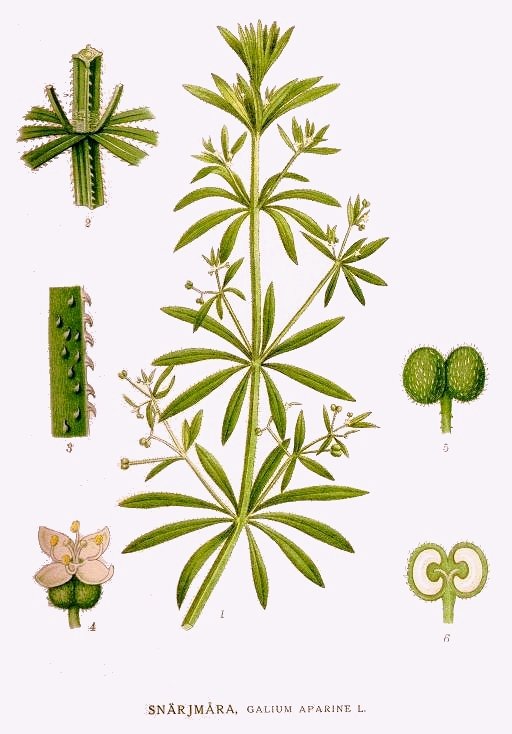 Also Known As:
Also Known As:
Bedstraw, Catchweed, Cleavers, Gallium, Goose Grass, Gosling Weed, Robin-Run-in-the-Grass, Scratchweed, Stick-a-Back, Sticky Willy.
Scientific Name:
Galium aparine.
Family: Rubiaceae.
People Use This For:
Clivers is used as a diuretic, a mild astringent, for dysuria, lymphadenitis, psoriasis, and specifically for enlarged lymph nodes.
Safety:
No concerns regarding safety when used orally and appropriately.13 There is no documented toxicity.14
Pregnancy and Lactation: Refer to a Medical Herbalist.
Effectiveness:
There is insufficient scientific information available about the effectiveness of clivers.
Mechanism of Action:
The applicable parts of clivers are the dried or fresh above ground parts. Cleavers contain tannins, which are reported to have astringent properties.14
Adverse Reactions:
None reported.
Interactions with Herbs & Supplements:
None known.
Interactions with Drugs:
None known.
Interactions with Foods:
None known.
Interactions with Lab Tests:
None known.
Dosage/Administration:
Dr Clare’s Blends: 1gm per day.
Oral: Typical doses are 2-4 grams dried above ground parts three times daily, or one cup tea (steep 2-4 grams herb in 150 mL boiling water 5-10 minutes, strain) three times daily.14 Liquid extract (1:1 in 25% alcohol) 2-4 mL three times daily.14
Spedific References: CLIVERS
13. McGuffin M, Hobbs C, Upton R, Goldberg A, eds. American Herbal Products Association's Botanical Safety Handbook. Boca Raton, FL: CRC Press, LLC 1997.
14. Newall CA, Anderson LA, Philpson JD. Herbal Medicine: A Guide for Healthcare Professionals. London, UK: The Pharmaceutical Press, 1996.